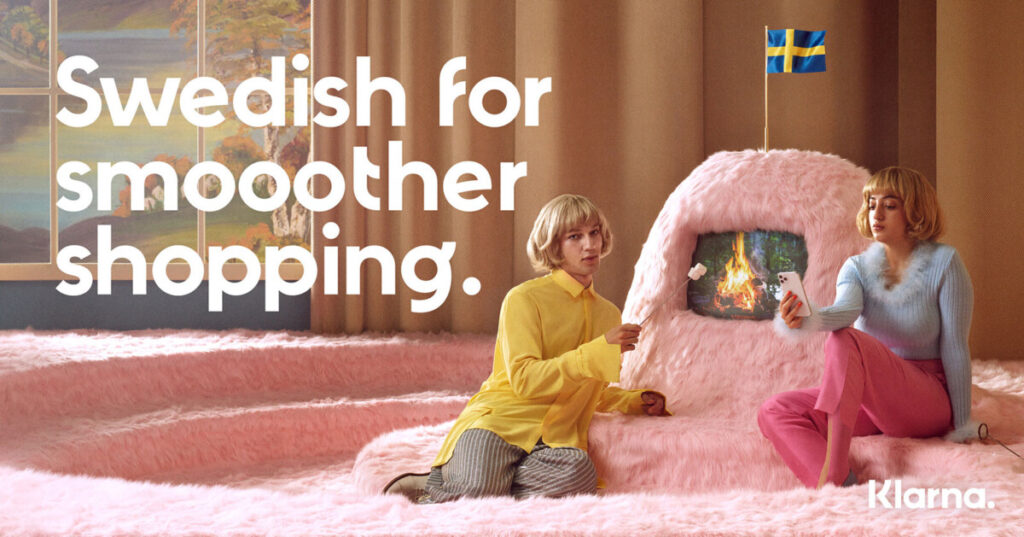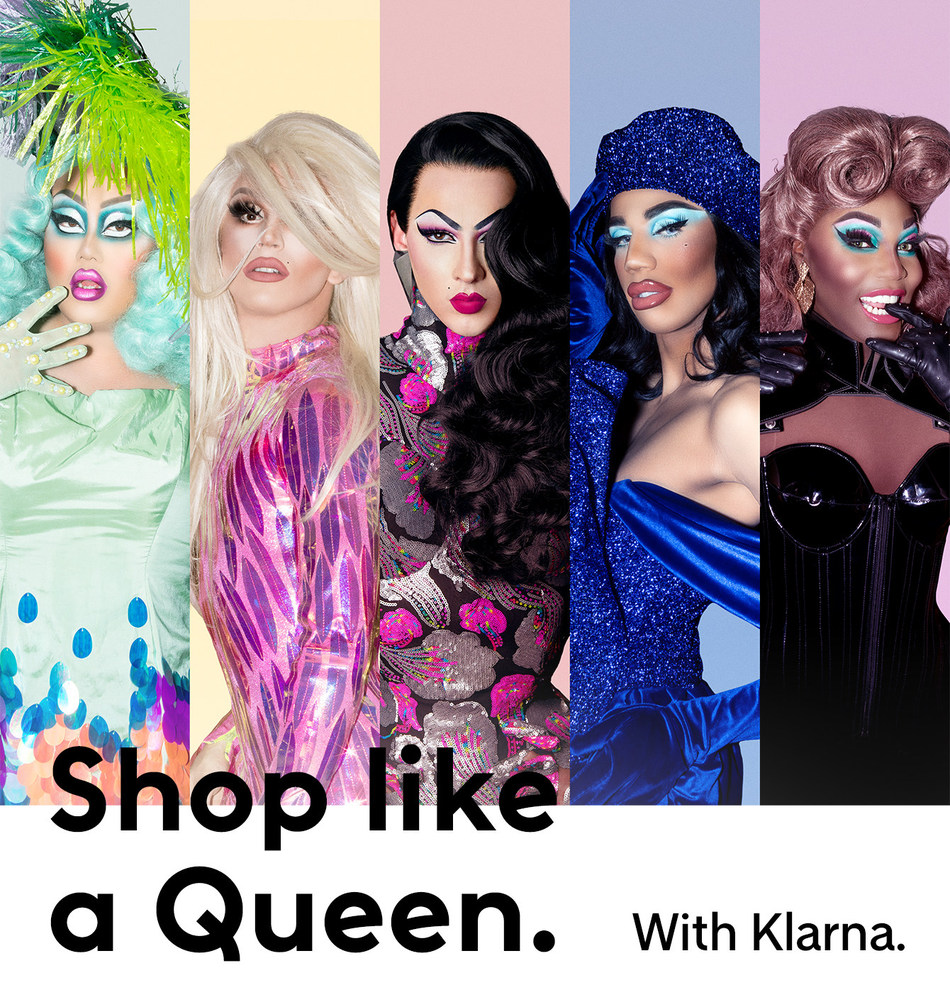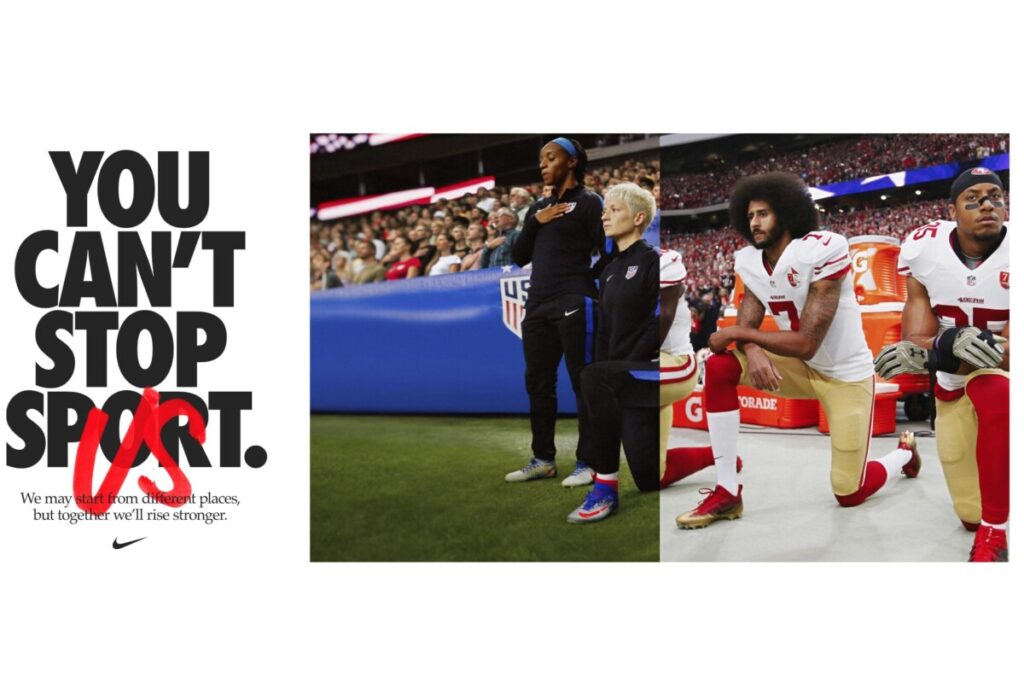Author: Shylin Ferrera (Page 1 of 2)
“You Can’t Stop Us” Nike Campaign
Klarna Inclusivity Ads


Klarna ‘Shop Like a Queen’
Woman “Run It All” Athleta Campaign

As technology progress, the forms in which we intake and relay media have as well. With each new medium, there are underlying consequences to its use. For despite the most innocent intentions are sill intentions none-the-less. How we choose to advocate any message will garner not only a response but a reaction. What we do with what we have is a message within and of itself. As Marshall McLuhan explains, the development and advancement of automobiles were made with the intention of travel, however, the consequences of Automation stealing jobs were the consequences. The car was the medium of the message. It can also be said that because Cars are an extension of us, Of our functions as a core, that there is more emphasis on consequence; it is more personal. The best example of this is Light and light bulb. The light bulb is merely an extension of man, that being our eyes. The development of the light bulb is an enhancement with many practical uses that extend beyond the reach of man. How said light bulb is used is neither here nor there, yet why it is used is more prominent. Similar to that of money, money itself has in turn become an extension of human value, be it used for food or living. When questioning why it’s used it then takes on meaning. It is the medium of a revolution, not an economy, or international affairs. It, the medium, retains this message as the answer to a “why”.
The Futurist Manifesto
In the Futurist Manifesto, Marinetti defines the future as a culmination of aggression, suppression, and the eternal. Marinetti remarks on the stagnancy of the past; how all things came to a slow-paced end. Beneath the word-vomit of constant simile and metaphor (Sorry professor, I just really disliked his pretentious tone! ), there is this inherent irony when referring to new age technology as gothic/bygone terminology such as centaurs, angels, and kings. It directly contrasts with the very concept of technology, which evokes ideas of “new” and “modern”. It is these disparities that further highlights the lack of energy exhibited by past literature and invention. When speaking in over-saturated similes, the car is brought down from “the pinnacle of human invention” to that of a “centaur”. Marinetti sees this and demands explosive energy instead. He speaks toward a future full of excitement and danger that is constantly living in the present. However, he takes this idea to the extreme when declaring his desire to, “-demolish museums and libraries, fight morality, feminism and all opportunist and utilitarian cowardice.” While there is defiantly an emphasis on constant advancements in the present age, there is also a vast appreciation for the past. More so now, we are constantly being told to look towards the past, to appreciate history, and to learn from it. It can be said, that only through this history we can advance at all, be it through morality, invention, or general understanding. Marinetti also has the problematic yet, the ironic idea of glorifying war and fighting feminism. In his exceedingly unhinged and deranged set of demands there is this overarching theme of “liberty”, yet, Marinetti seems to be the most oppressive figure of them all.
Who We Are Manifesto of the Constructivist Group Aleksandr Rodchenko, Varvara Stepanova, and Aleksei Gan
Similar to Marinetti, the Manifesto of the Constructivist speaks on the “new”; not an outright disregard for the past, yet, a commentary of what has come to be. When considering the present, It’s often that we take what we have for granted. Our home, Our education, even the plate we eat of off was once just a concept, an idea someone brought into fruition that became so prevalent we often forget its value. The manifesto if the constructivist echos that sentiment, noting the mission of creators. There is no outright creation, but reconstruction, developing advancing, and repeat. A cycle seemingly mundane, but what a luxury it is to be Mundane. By stoping at “just words”, or “just a picture” we lose out on what could’ve been. There is a definite correlation with how creators work today. We take what always has been a look past “just a -“, to discover what can be. While Marinetti looks to destroy any traces of the past, The constructivist own up to it, they recognize the foundation and wish to expand on it.
Our Book El Lissitzky
Lissitzky takes a more solemn approach to the principles of the Constructivist group. While the constructivist say nothing is new yet can still be built upon, Lissitzky states outright that art has no evolution. That we invent until burden than event again to release the burden, and it repeats. He states that the root of this is language, communication, and what better way to convey that than the book. And as time goes on “the book” is the pinnacle of art, and how we develop new relationships with said “book” is how we can move forward. Some of this holds today, as designers still attempt to push typography as well as different forms of communication to relay their message. However, it does not always have to be a book. Begot pictures, dance, clothes, etc. There is more evolution with an emphasis on liberation and communication than there is the single medium of a “book”. I feel as though boiling everything down to a single concept is what limits the artistic freedom of what their groups strived for. By labeling themselves, creating “rules”, set goals, and manifestos, it became more about the individual’s desires, rather than the liberation of a group as a whole.
My thoughts on the reading:
Machines are taking the life out of our society, We all essentially bow down to it as we’ve become extremely reliant on mechanical labor. It is because of these technological advancements that we’ve lost our sense of being, of individuality. However, since we can’t take away the mechanical system we’ve trapped ourselves into, It is up to the individual to change their perception, intentions, and attitude to this new and ever-evolving way of life. However, that does not top say that all machines are bad. Previously, artists or those with artistic spirit were limited to what type of school they attended and if they could attend school at all. This system brought about social isolation, Identifying artists by scholarship rather than artistic merit. It also put a societal label on what “aft” is. Rather than leaving it up to the artist and consumer themselves. Artistic expression was no longer that, but a lecture on what it should be rather than what it can be. That’s not to say, however, that school isn’t important. School can teach us discipline, foundation, and habit. Yet art should be built upon these teachings rather be limited to said teachings. In a sense, by combining. Both the academic and the freedom of individual expression, only then can artist master their craft, even in the presence of a mechanical future. This can give life to new forms of artistic expression, of construction, of collaboration, and so much more that can not be obtained when limiting oneself to individual factions. In actuality, the advancement of technology and all that comes with it is built of the idea of unity. Rather than letting it separate us, we as people and artists should make the conscious effort to allow it to unify us. Be it through posters, illustrations, Commercial design; as time moves on we are producing for a mass market, interacting and communicating with people we might not have before. It is because of this that we must also think harder about what we say and produce as language is one of if not the most important, powerful, and influential tools we have.
Language is that of a living record. It speaks of generations, trends, culture, and lives alongside us through words and symbols. Language is an isolated facet of the broader idea of communication. It is the means by which we go about communicating. When broken down to its key components, Saussure remarks language as “sign”, “signified”, “signifier”. The sound, word, or image (signifier) when combined with the mental concept or meaning (signified evoked by the signifier), generates the object (sign). When thought of like this, “language” in regards to design becomes much clearer. It’s a designer’s goal to generate a universal sign. A feat made possible when looking at well-known logos such as Nike, Disney, and McDonald’s. A designer breaks the chain of signifiers as the viewer must navigate to the sign themselves (ie. apple with a bite mark means the brand “Apple”).
Language can convey the abstract in a way that communication can not. You may communicate directions through pointing, yet you can not say “2 days ago I tripped while running in that direction.” However, this does not mean communication is a “less” successful form of conveying information. As J. Abbot Miller and Ellen Lupton of Design Writing Research suggest, words can be given multiple meanings. When looking at roman numerals, lines drawn into the sand, or the number of diamonds on a playing card, each of these symbols can convey quantities. A concept that can also be applied to the design process. As mentioned earlier logos can become synonymous with a brand, product, or phrase when applying the same notion. It becomes a way for designers to develop there own “signifier + signified” formula, and by succession, their own “sign”.





Recent Comments